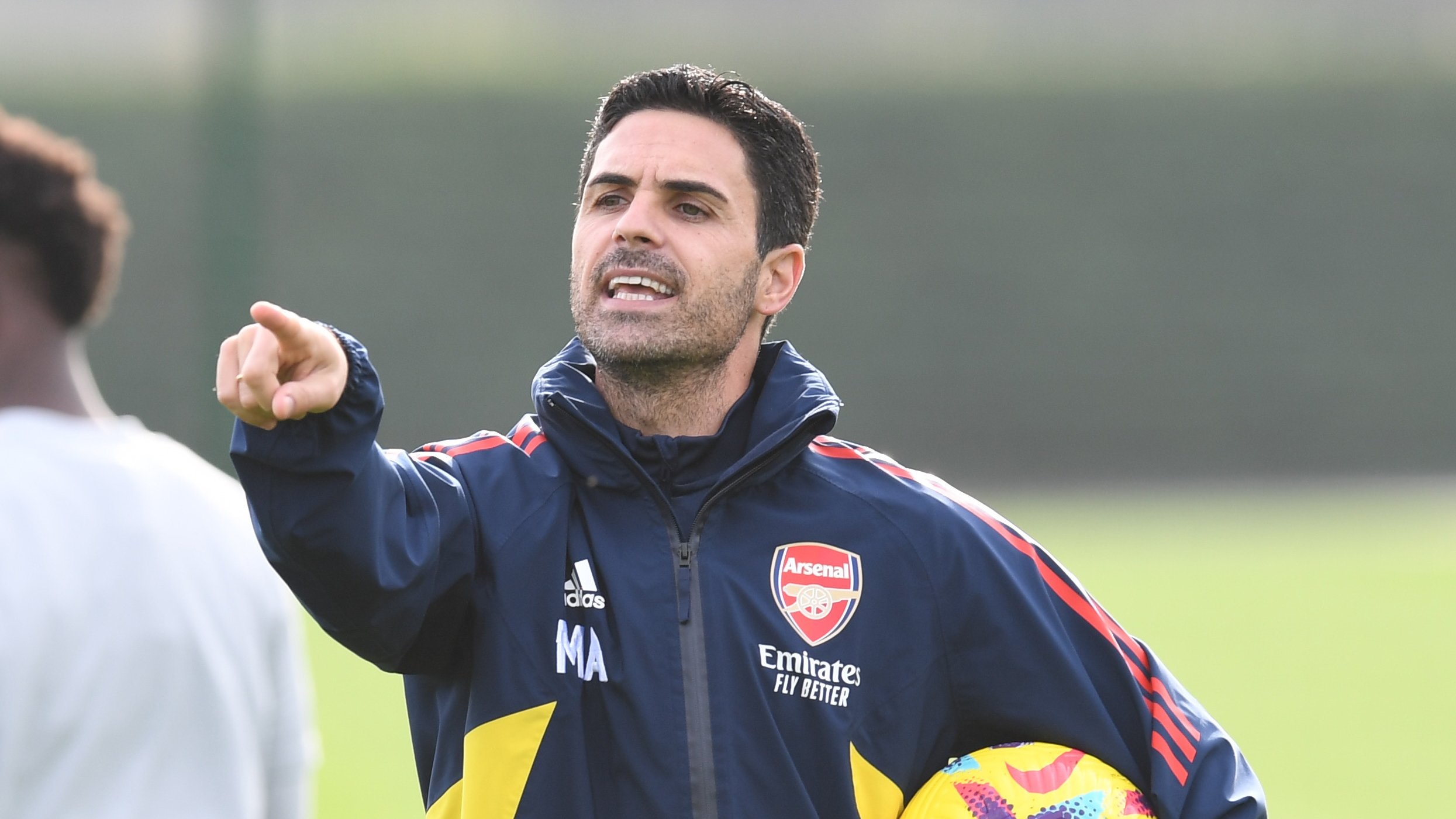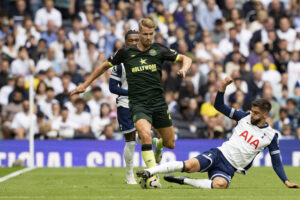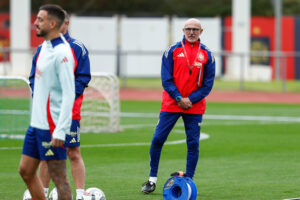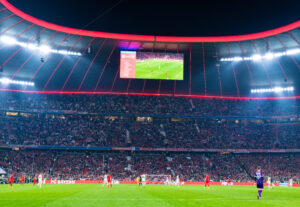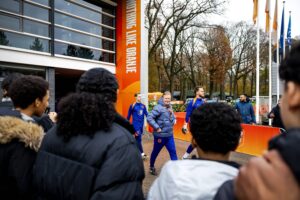Arsenal have been a team reborn so far this season under manager Mikel Arteta. The Gunners are currently sitting in 1st place in the Premier League and progressing to the knockout stages of the Europa League with one game remaining. In their most recent Europa League win against PSV, fans could be forgiven for thinking that they’ve seen this style of play before. The patience, the probing, the constant switch of plays and finding space in half-spaces are common themes of another top English team. Juego de posición or Positional Play has been a theme in Pep Guardiola’s teams ever since the start of the Catalan’s coaching career.
Are Mikel Arteta’s Arsenal The Real Deal or just Manchester City?
The Present
The Dutch hosts found the net first as Cody Gakpo’s finish on a counter-attack cut Arsenal open, although the effort was ultimately ruled offside. The close call served as a wake-up call to the Gunners and signalled that possession doesn’t automatically mean results.
As the game would wear on, PSV would have another goal disallowed before finally taking the lead in the second half to finish 2-0. Admittedly, this was far from Mikel Arteta’s preferred usual starting 11. Rob Holding started in place of Gabriel while Thomas Partey and star man Bukayo Saka both took their places on the bench.
It ends in defeat in Eindhoven
— Arsenal (@Arsenal) October 27, 2022
Nevertheless, even the most casual of fans will likely notice the similarities between Manchester City and Arsenal this season.
Positional Play: Similarities
As mentioned above, a lot of the basic elements of positional play appear in the style of both Pep and his countryman’s respected teams. The splitting centre-backs (famously known as La Salida Lavolpiana in Spanish-speaking countries) and the defensive midfielder joining the centre-backs in the build-up are common characteristics. Pep has admittedly evolved over the years from his Barcelona years to his current City squad. More recently, it has been his use of inverted wing-backs that has caught the eye the most.
The positional play essentially involves the creation of numerical and positional superiorities in every area. By training and practising structural links between players, the team attempts to become an ‘automatism’ where off-the-ball movements almost become muscle memory. In the build-up and chance creation phase, this is implemented by quick movement of the ball and the creation of numerical superiorities in each zone. At the same time, there is always at least one player providing width to stretch the opposition’s structure and create space in the middle.
In the final third, it is pretty self-explanatory for the most part. Once a weakness is found in the opposition, it is to be grabbed and twisted and not let go. Once behind enemy lines, it is all about decision-making and composure. As Pep himself has said in the past, “my job is taking you to the final 3rd and your job is to finish”. Thierry Henry once described this perfectly with this quote: “He puts everything in place to get the ball up to the final third of the pitch and then trusts his team to finish the job in the only area of the field that can’t be planned for.”
Arteta’s Arsenal
It should therefore be of no surprise that Mikel Arteta’s Arsenal is so heavily influenced by and resembles Pep’s styles. Arteta spent three years under Pep Guardiola at Manchester City before branching out on his own at Arsenal. Similarly, this is also why it should not come as a surprise that Gabriel Jesus and Oleksandr Zinchenko took as little time as they did to adapt to Arsenal’s style of play.
In many ways, the roles that Thomas Partey carries out at Arsenal is similar to Sergio Busquets at Barcelona or Rodri or Fernandinho in Guardiola’s City. The role asked of Martin Odegaard in Arteta’s side is also not too dissimilar to what Pep asked of Andres Iniesta more than a decade ago. The similarities are there throughout the North London side, however, Arsenal are more than just a carbon copy of Guardiola’s previous teams.
Weaknesses
However, where there are similarities in technical player profiles and the intent of play, there are also differences in key areas and aspects. For all their youthful exuberance and energetic displays that have lit up the Premier League so far this season, Arteta’s Gunners have lacked that maturity and speed of thought that has symbolized displays from Pep’s teams throughout his career. When in possession, this Arsenal side looks devoid of ideas when faced with teams that employ a good defensive structure. Sometimes the off-the-ball movement is slow to create space while there is a lot of ball-watching instead of players offering themselves as an option in midfield.
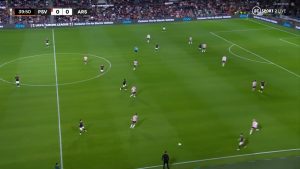
The right half space, an important area in the zone of creation, left completely empty during one of Arsenal’s first-half attacks vs PSV.
When discussing maturity, is not as much about age as it is about a player’s personality. Arsenal boast one of the youngest teams in the League and yet still find themselves at the top of the Premier League with such a young squad. One of Arsenal’s youngest players is Bukayo Saka, who has made 148 appearances for the club since making his first-team debut in the 2018/19 season. Saka also just became the third-youngest player to reach 20 assists in the Premier League, trailing only former-Gunner Cesc Fabregas and Wayne Rooney. With such accomplishments there can be little doubt over the 21-year-old’s importance to the team and should be a solid indicator of his maturity. However, Saka is only one player and the rest of the young squad will need follow suit if they are to keep their strong start to the season going. The effect of maturity and an experienced head throughout the course of a season should not be underestimated.
.@Arsenal are young and flying! 💨 pic.twitter.com/SMHyIgZCKs
— Premier League (@premierleague) October 31, 2022
Value of Experience
However, as Manchester United have shown with their performances when Raphael Varane and Casemiro have been on the pitch, there is no replacement for a player who has been there and done it all. Most top Premier League teams can boast players who have been there and won a major trophy. City are the reigning and serial champions, Liverpool have won the Champions League and Premier League in the last five years and even Tottenham can boast the last World Cup-winning captain among their ranks in Hugo Lloris and proven winners in Ivan Perisic and Antonio Conte.
The unanimous fear among Arsenal fans is the all too familiar crumbling when the going gets tough towards the second half of the season. Unfortunately for them, this might still hold true until Arteta can get the final pieces of his puzzle together. Player’s such as Granit Xhaka and Thomas Partey will prove invaluable as the seasons goes on but it remains to be seen as to whether they can keep this group of young player’s focused and determined. There is a lot to admire about Arsenal at the moment but until they can find that missing, mature piece of the jigsaw, they might still just be young and immature and pretenders instead of contenders.
😍 Look who's back
🙌 @ElNennY pic.twitter.com/pxs1LRDYq5
— Arsenal (@Arsenal) October 29, 2022


